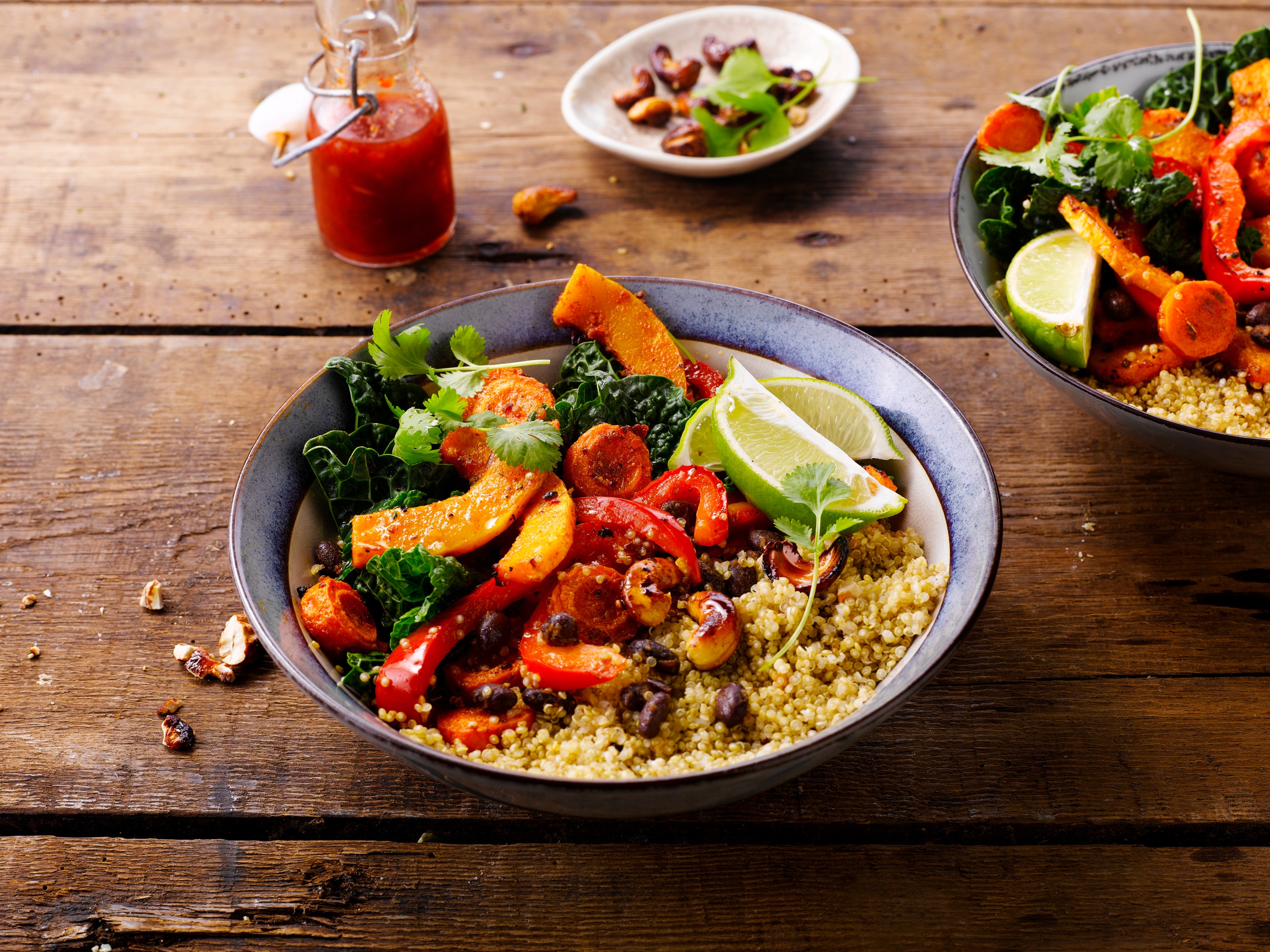Skip to:
Since the early 2000s, quinoa has become one of the world’s most popular health foods. But long before quinoa recipes became a mainstay on the menus of fashionable eateries across the globe, this humble “pseudo-grain” was the go-to food staple in South America for centuries.
Quinoa (pronounced keen-wah) is healthy and high carb, making it the perfect alternative to pasta or rice. Even though it’s technically not a cereal grain, it still counts as a whole-grain food. But what is quinoa if it’s not a grain? Botanically, quinoa isn't a cereal but a relative of spinach, beets and chard, with a pleasantly mild, nutty flavour and fluffy texture.
In Bolivia and Peru, it's traditionally eaten mainly in stews and soups, but cooked quinoa can be put to use in a broad range of delicious dishes. You can serve this Future 50 Food hot in a light and creamy “quinotto” (risotto with quinoa), or toss it cooled with some fresh greens for a wholesome salad or in a tasty chicken wrap.
Quinoa Health Benefits
Quinoa is gluten-free, high in protein and one of the few plant foods that contain sufficient amounts of all nine essential amino acids, which help tissue growth, energy production, immune function and nutrient absorption. It is also high in fibre, which can help reduce blood sugar levels, lower cholesterol, increase fullness and help with weight loss.
Besides being a good source of magnesium, folates and other micronutrients, the manganese in quinoa helps to stimulate mental energy and performance, making it a great option for a workday lunch!
The total cooked quinoa calories in 1 cup of cooked quinoa is 222. This includes 39g of carbohydrates and 4g of fat.1
Is Quinoa Sustainable
Quinoa is a hardy plant that requires little fertilization and can tolerate frost, drought and high winds. This means it can grow in diverse climates and terrains, including areas with minimal irrigation or with as little as three to four inches of annual rainfall.
Despite being a water-wise food, the surge in demand for just a few varieties of quinoa has forced farmers to take measures to increase yield, much to the detriment to surrounding trees and soil. Luckily, quinoa is not very resource intensive when compared to similar crops, and therefore can and should be grown following sustainable practices.
There are also incentives in place for farmers to grow less common types of quinoa and programs to encourage their consumption in schools and restaurants. This has opened global trade opportunities for farmers, and has benefited local economies.
How To Make Quinoa
Cooking tasty quinoa recipes is not as difficult as you might think. Follow these easy steps to get fluffy quinoa every time.
- First, rinse the quinoa under cold water to remove any bitter or soapy tastes.
- Then, add 1 cup of quinoa, followed by two cups of water, to a medium sized saucepan on a high heat. (Tip: the quinoa to water ratio is always 1 to 2).
- Give your quinoa a flavourful boost by adding a generous pinch of Knorr Seasoning before the water comes to a boil.
- Once boiling, reduce the heat and let simmer for 12-15 minutes until all the liquid is absorbed.
- Can’t see any more water? It’s ready! Fluff it up with a fork, and serve!
Quinoa Recipes
If you’re keen to start adding quinoa to your diet, one of the easiest ways to do so is to substitute it for rice in dishes such as pilafs, stuffings, salads and even veggie burgers. You can also try one of these delicious quinoa recipes:
- Try your hand at making this Quinoa Vegetable Salad recipe, it's not too complicated to make but will be sure to impress!
- This Pomegranate & Chickpea Quinoa Salad recipe is easy to make and is a great option to take to work as a healthy lunch.
- Another delicious option for a healthy lunchbox meal, this Avocado & Egg Quinoa Salad recipe will become a regular after you've made it once!
- Get a huge dose of goodness in a bowl with this Hearty Grain Bowl recipe. The quinoa provides the perfect base to showcase the other flavours.
We’ve included quinoa on our list of Future 50 Foods, a list of 50 ingredients we believe we should be eating more of, because they’re good for us and they benefit our planet.
1. https://www.healthline.com/nutrition/11-proven-benefits-of-quinoa

